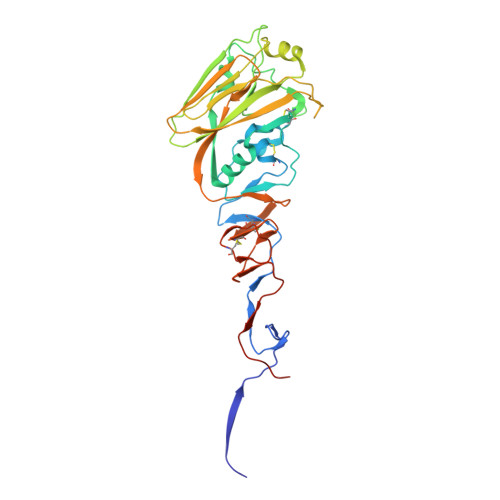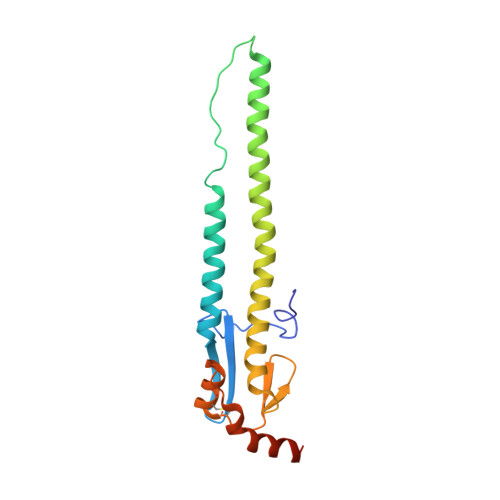A Unique and Conserved Neutralization Epitope in H5N1 Influenza Viruses Identified by an Antibody against the A/Goose/Guangdong/1/96 Hemagglutinin.
Zhu, X., Guo, Y.H., Jiang, T., Wang, Y.D., Chan, K.H., Li, X.F., Yu, W., McBride, R., Paulson, J.C., Yuen, K.Y., Qin, C.F., Che, X.Y., Wilson, I.A.(2013) J Virol 87: 12619-12635
- PubMed: 24049169
- DOI: https://doi.org/10.1128/JVI.01577-13
- Primary Citation of Related Structures:
4MHH, 4MHI, 4MHJ - PubMed Abstract:
Despite substantial efforts to control and contain H5N1 influenza viruses, bird flu viruses continue to spread and evolve. Neutralizing antibodies against conserved epitopes on the viral hemagglutinin (HA) could confer immunity to the diverse H5N1 virus strains and provide information for effective vaccine design. Here, we report the characterization of a broadly neutralizing murine monoclonal antibody, H5M9, to most H5N1 clades and subclades that was elicited by immunization with viral HA of A/Goose/Guangdong/1/96 (H5N1), the immediate precursor of the current dominant strains of H5N1 viruses. The crystal structures of the Fab' fragment of H5M9 in complexes with H5 HAs of A/Vietnam/1203/2004 and A/Goose/Guangdong/1/96 reveal a conserved epitope in the HA1 vestigial esterase subdomain that is some distance from the receptor binding site and partially overlaps antigenic site C of H3 HA. Further epitope characterization by selection of escape mutants and epitope mapping by flow cytometry analysis of site-directed mutagenesis of HA with a yeast cell surface display identified four residues that are critical for H5M9 binding. D53, Y274, E83a, and N276 are all conserved in H5N1 HAs and are not in H5 epitopes identified by other mouse or human antibodies. Antibody H5M9 is effective in protection of H5N1 virus both prophylactically and therapeutically and appears to neutralize by blocking both virus receptor binding and postattachment steps. Thus, the H5M9 epitope identified here should provide valuable insights into H5N1 vaccine design and improvement, as well as antibody-based therapies for treatment of H5N1 infection.
Organizational Affiliation:
Department of Integrative Structural and Computational Biology, The Scripps Research Institute, La Jolla, California, USA.


















